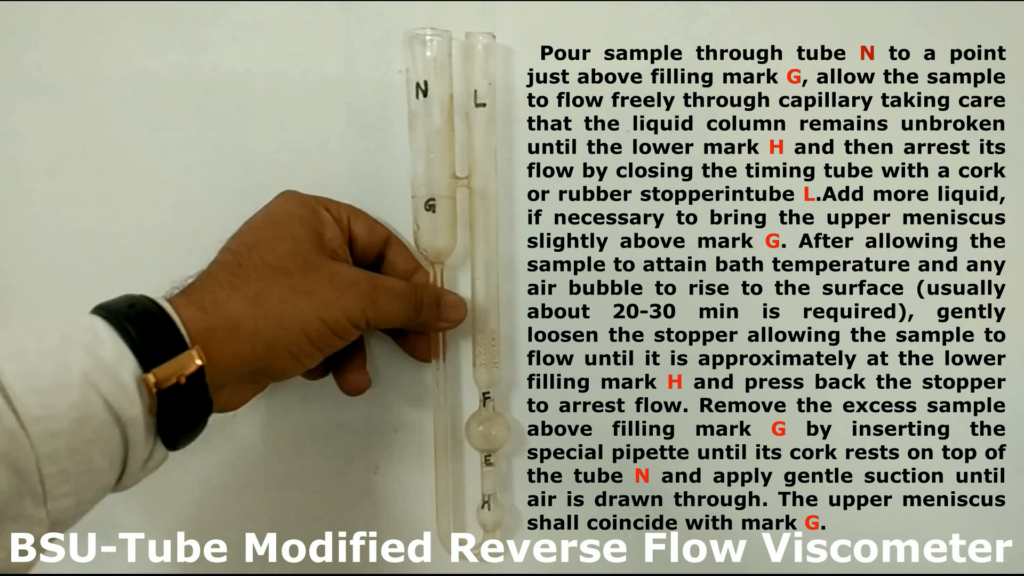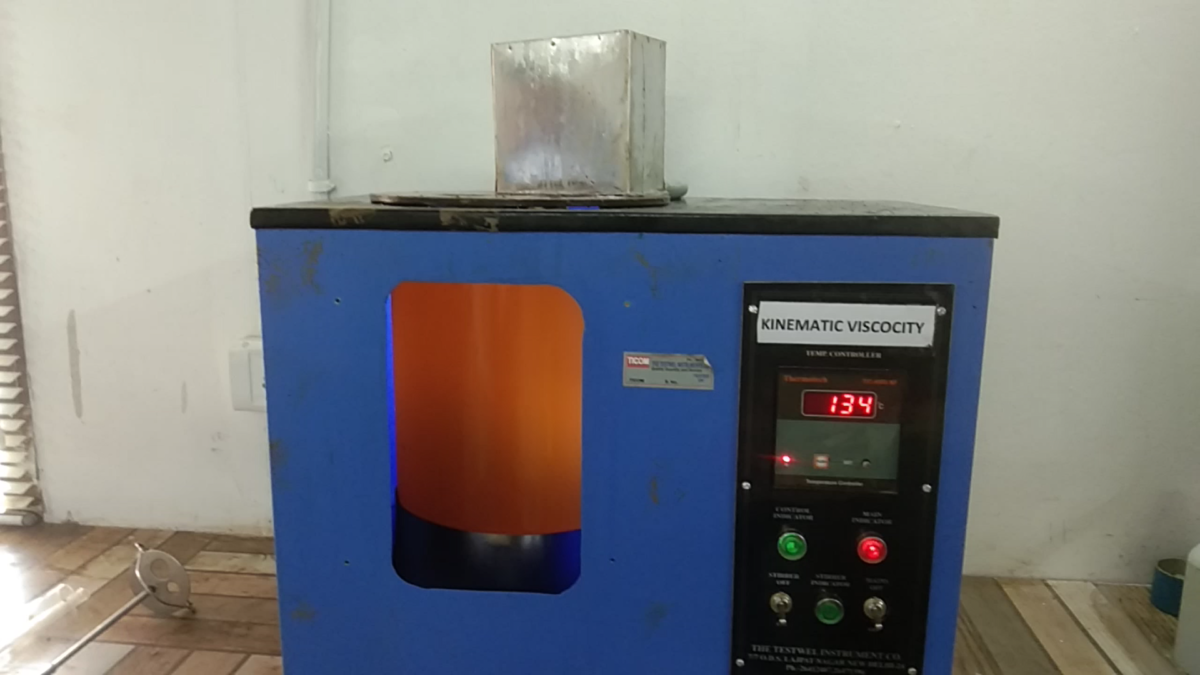INTRODUCTION
The kinematic viscosity of a liquid is the absolute or dynamic viscosity (poise 60 ° C ) divided by the density of the liquid at the temperature of measurement. The 135° C (275° F) measurement temperature was chosen to simulate the mixing and lay down temperatures typically encountered in HMA pavement construction.The SI unit of kinematic viscosity is m2/s. The CGS unit of kinematic viscosity is the stokes (St).
SCOPE . IS 1206 (part III) covers the method for the determination of kinematic viscosity of paving grade and cut-back It is applicable to the materials having a viscosity range of 30-100000 cSt. Kinematic Viscosity of a Newtonian Liquid.
It may be defined as the quotient of the absolute or dynamic viscosity divided by the density of the liquid under test; both at the same temperature. The cgs unit of kinematic viscosity is the stoke which has the dimensions square centimetre per second. For petroleum products the kinematic viscosity is generally expressed in centistokes (cSt) which is 1/100 th of a stoke.
APPARATUS:
Bath :Suitable bath for immersion of the viscometer so that the liquid reservoir or top of the capillary whichever is uppermost is at least 20 mm below the upper hath level.
Timing Device – Any timing device such as stop-watch or stop clock capable of being read up to 0.5 s.
Procedure For Making Bitumen Sample –
Heat the sample to a temperature not more than 90% for bitumen until it attains totally pouring consistency & stir it and transfer approximately 20 ml into a container. Precaution should be taken to avoid over-heating and having any entrapped air .

1.Mount the BS U-tube viscometer in the constant temperature bath keeping tube L vertical.
2.Pour sample through tube N to a point just above filling mark G, allow the sample to flow freely through capillary R, taking care that the liquid column remains unbroken until the lower mark H and then arrest its flow by closing the timing tube with a cork or rubber stoppering tube L
3. Add more liquid, if necessary to bring the upper meniscus slightly above mark G. and after allowing the sample to attain bath temperature and any air bubble to rise to the surface .
4.Gently loosen the stopper allowing the sample to flow until it is approximately at the lower filling mark H and press back the stopper to arrest flow.
5.Remove the excess sample above filling mark G by inserting the special pipette until its cork rests on top of the tube N and apply gentle suction until air is drawn through the upper meniscus shall coincide with mark G.
6.Allow the viscometer to remain in the constant temperature bath for a sufficient time to ensure that the sample reaches temperature equilibrium. It takes about 30 min at 135°C.
7.After completion of 30 minutes ,remove the stopper in the tube N and L respectively and allow the sample to flow by gravity.
8.Measure to the nearest 0.1 s the time required for the leading edge of the meniscus to pass from timing mark E to timing mark F.
9. Note down the time .
CALCULATION Calculate the kinematic viscosity up to three significant figures With the help of following equation: Kinematic viscosity cSt=Ct Where C = calibration constant of the viscometer in centistokes per second, and t = efflux time in seconds

